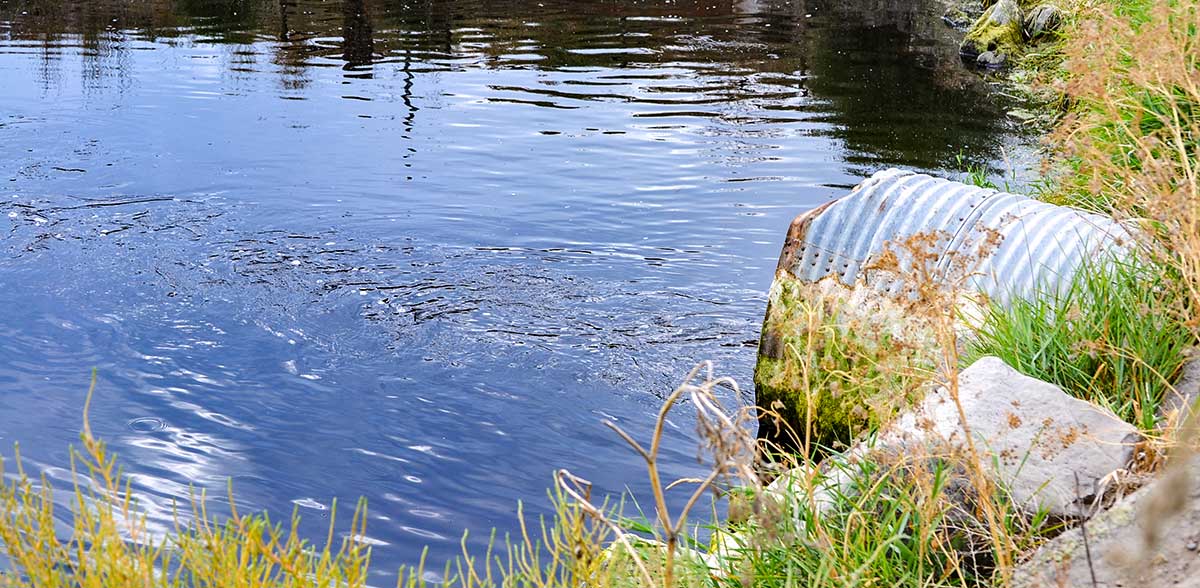Nov 15, 2021
Our first big milestone… But still many miles to go
By Holly A. Heyser, Communications Director
(Originally published in the Winter 2021 issue of California Waterfowl)
Water flows from the headgates of the Ady Canal toward the Lower Klamath National Wildlife refuge in September. PHOTO COURTESY OF USFWS
It was more of a stream than a torrent. But the water that started flowing into the Lower Klamath National Wildlife Refuge on Sept. 3 marked a huge milestone for California Waterfowl’s effort to keep the refuge from turning into a desert: That was the day we showed that a permanent water right could be transferred from a private ranch to the refuge.
And it was just a beginning.
Lower Klamath has been suffering from dwindling water supplies for 20 years. It’s due in substantial part to a federal directive that requires holding increasing amounts of water from the Klamath Project in Upper Klamath Lake to help endangered fish, no matter what the cost to the surrounding ecosystem.
CWA has not yet been able to persuade the federal government that it must also provide water for Lower Klamath under the National Wildlife Refuge System Administration Act. We have not given up on that, but our Lower Klamath Refuge Task Force concluded bold, immediate action was also in order, so it began work on acquiring permanent water rights from willing sellers in the Klamath Basin.
The family of Kurt Thomas – the owners of Agency Ranch in Oregon’s Wood River Valley – were the first to step up, and CWA initiated a multiyear purchase agreement this spring.
But the agreement did not make the deal a slam-dunk. CWA had to raise $600,000 for a down payment due this spring. The transfer required approval from the Oregon Water Resources Department, which had to ensure that it complied with complex water laws designed to protect all water users. And then CWA had to secure an agreement to transport the water through Klamath Project canals.
The down payment money came first, thanks to incredible support from CWA supporters who want this crisis to end – they have contributed more than $1 million to the effort to date.
OWRD approved the transfer in late August, but only 3,750 acre-feet per year, not the requested 4,500 acre-feet. And the U.S. Bureau of Reclamation opened the headgates of the Ady Canal the next week. But because approval came so late in the irrigation season, the most Lower Klamath could get was 700 acre-feet.
All of these amounts are small compared with the refuge’s need of 100,000 acre-feet per year. But a permanent water right is water that can be counted on from year to year. It is much more secure than waiting for leftovers from the Klamath Project, which invariably come too late, if at all.
Most of Lower Klamath’s losses have come in spring and summer, when water is desperately needed for breeding ducks, molting ducks and the earliest migrants from northern breeding grounds. That’s because the refuge is currently relegated to Klamath Project leftovers, which don’t come until early fall when farmers are done irrigating crops.
Having a permanent water right means the refuge can take the water for those critical periods.
More importantly, the 3,750 acre-foot right that CWA has acquired is only a beginning. Other water-rights holders in the Basin have expressed interest in transferring their rights – potentially 25,000 acre-feet per year in total, if not more – but everyone was waiting to see if it could be done. And now it has.
But even as those processes can begin, CWA still has work to do on this acquisition. We are seeking state and federal funding to complete the purchase. It was extraordinary for fewer than five dozen of our supporters – primarily duck hunters – to fund the bulk of the down payment. But the Lower Klamath National Wildlife Refuge is a public resource that benefits wildlife throughout the Pacific Flyway, and wildlife afficionados beyond the duck hunting community.
We also must work to secure as much of the water right as possible for the refuge. Water is always lost in transport, and not just due to evaporation: There are negotiated formulas for how much water actually gets delivered.
And we must continue the fight for a more equitable distribution of water in the Basin. Federal directives are strangling both Lower Klamath and farms in the region, at a time when increasingly frequent and severe droughts are expected to shrink how much water is available each year.
This does not mean we want to throw endangered fish under the bus. Far from it – CWA is a conservation organization that values the entire ecosystem in the Basin, not just the parts that ducks need. And the endangered fish are NOT recovering under current efforts. But science is increasingly steering management toward ecosystem solutions in which fish, fowl and farms can all benefit from the same water. It’s time to work toward that solution.


